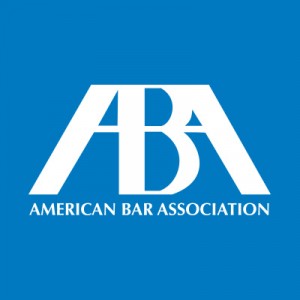Here's a sneak peek at what the House of Delegates may vote on during the ABA Annual Meeting

The policy-making body of the American Bar Association will meet Monday and Tuesday during the ABA Annual Meeting to vote on a wide variety of resolutions. From addressing current hot-topic legal issues like immigration to determining a future financial path for the association, more than 40 resolutions and amendments have currently been proposed for the ABA House of Delegates to consider.
But while the current list of proposed resolutions is available online, the final slate to be voted on won’t be determined until Sunday afternoon, and resolutions may still be withdrawn, modified or added before then. Delegates could vote on regulating legal services; how employers should handle lawyers struggling with substance abuse; standards for law school accreditation; and the dues structure of the association.
That last issue is the goal of Resolution 177, which would amend the ABA’s dues structure effective in 2020. As part of addressing the association’s decline in dues-paying members—which has forced it to reduce funding for some entities and lay off staff—the Standing Committee on Membership spent nearly two years studying how to restructure dues. Its proposal would reduce the association’s current 20 categories of members to five categories, and lower yearly dues for almost everyone.
Studies commissioned by the Standing Committee on Membership suggest this would reverse the decline in dues-paying membership. However, the committee notes in its report that the association will take a financial hit before membership is projected to rebound. It believes this will be worthwhile, producing long-term membership increases.
“The cycle of charging ever-increasing dues on an ever-decreasing membership is simply not sustainable in the long run,” wrote membership committee chair Tracy Giles, of Virginia bankruptcy law firm Giles & Lambert, in the report. “Now is the time to use our financial strength to make changes that research shows will be well-received by the lawyers in our country and begin to build an American Bar Association for the next 140 years.”
Another internal change that may prove controversial is in Resolution 111D, sponsored by the Section of Legal Education and Admissions to the Bar. It proposes eliminating the requirement that accredited law schools use a “valid and reliable admission test” as part of the application process, which is Standard 503 of the ABA Standards and Rules of Procedure for Approval of Law Schools. Accompanying changes to Standard 501 would use admission credentials and attrition rates to determine whether a school is complying with accreditation standards. The proposal attracted pushback before its adoption in May. (More information on that and accompanying resolutions from the section can be found in a separate article.)
Rule 7 of ABA Model Rules of Professional Conduct—which covers how lawyers can advertise, discuss their services and solicit new clients—would be edited under the proposed Resolution 101, as recommended by the Standing Committee on Ethics and Professional Responsibility. An in-depth article on these proposed updates appeared in the July 2018 issue of the ABA Journal.
Two resolutions address the regulation of nontraditional delivery of legal services. Resolution 10A, from the New York State Bar Association and the New York County Lawyers Association, suggests that jurisdictions adopt consumer-protection standards for businesses that offer legal forms online. Resolution 115, from the Standing Committee on Prepaid Legal Services and the GPSolo Division, proposes that the House adopt standards by which the ABA may accredit prepaid legal plans. Both resolutions note that the services they seek to regulate are alternatives to a traditional lawyer-client relationship used by people of modest means, making it important that they be affordable and competent.
And for legal employers who’ve struggled with addiction or other forms of impairment, Resolution 103 would adopt the ABA Model Impairment Policy for Legal Employers. Sponsored by the ABA’s Working Group to Advance Well-Being in the Legal Profession—a project of outgoing ABA President Hilarie Bass—the model policy suggests a policy for legal employers that would promote early identification and intervention.
Several resolutions also tackle social issues from a legal perspective. Resolution 100B urges Oregon and Louisiana to join the other 48 states in requiring a unanimous jury to convict someone of a felony. Sponsors include the Criminal Justice Section, the Section of Civil Rights and Social Justice and the Oregon State Bar. The Commission on Disability Rights sponsors Resolutions 116A, B and C, which address disability discrimination in air travel, education, and access to technology.
And at a time when the American public is keeping a close eye on immigration policy, the ABA Commission on Immigration seeks to update its standards for the custody, representation and adjudication of the cases of unaccompanied immigrant minors in Resolution 119. Those standards, last addressed in 2004, regulate unaccompanied immigrant children’s rights to health care, recreation, family contact and family reunification, as well as due process of law. The accompanying report notes that while the 2004 standards provided needed guidance, the need has grown considerably as conditions in Central America worsen and more unaccompanied minors arrive at the border.
“Regardless of changes in politics, we must remember that these children remain children, with all their needs and vulnerabilities,” commission chair Mary Meg McCarthy wrote in her report.



